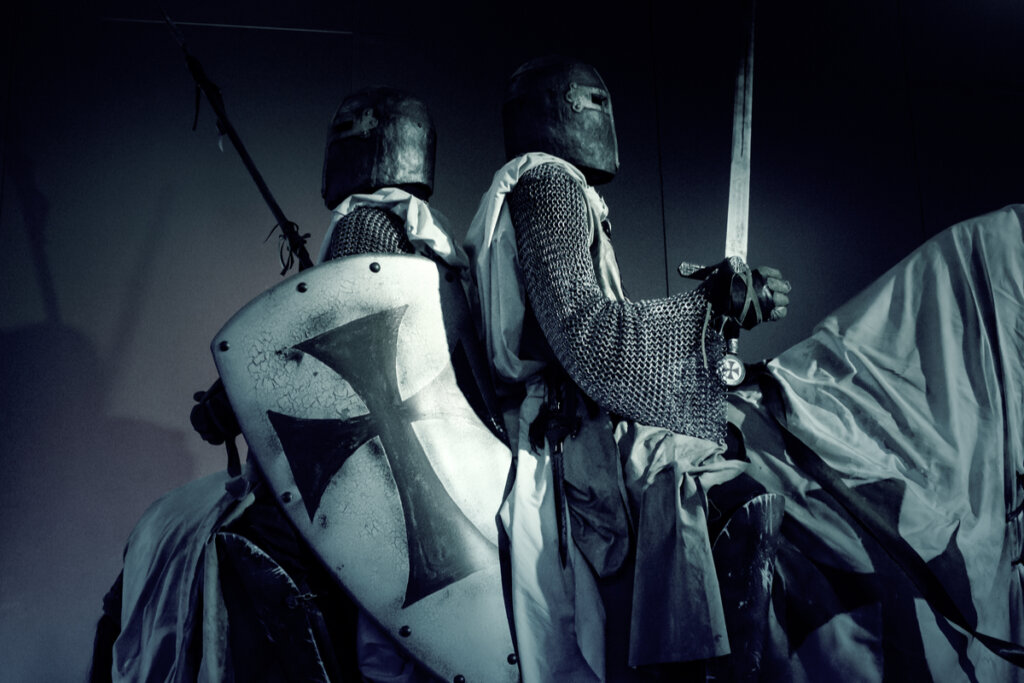The Most Successful Conspiracy Theory Ever

The most successful conspiracy theory ever didn’t circulate via social media. Contrary to what many may think, this type of trickery is older than it seems. In fact, it could be said that conspiracy theories have existed from the dawn of time. It’s just that, today, they’re more visible.
We might say that every conspiracy theory has its origin in the difficulty of explaining a certain critical fact. As long as there are no explanations available, or they’re available yet complex and not really understood by the majority, a conspiracy theory fills the gap. It’s a story that has a certain logic, even though there’s no evidence to support it.
Occasionally, these theories aren’t widely transmitted and are gradually forgotten. On the other hand, in others, they acquire great relevance, to the point where they end up defining the course of history. This is what happened with the most successful conspiracy theory ever.
“Throughout history, conspiracy theories have similar elements and usually have to do with something that is happening at the time that is difficult to explain or is very uncertain and an explanation is being sought ”.
-Sara Gorman-

What is a conspiracy theory?
Although the concept of conspiracy theories is well known, not everyone is aware of the meaning of this expression. It’s usually the kind of narrative that claims a secret and threatening group is carrying out hidden actions to achieve a goal that harms everyone or the majority.
The main characteristic of the conspiracy theory is its simplicity. Indeed, its structure is similar to that of a children’s story. In one corner there are clandestine villains, with immense power, who are carrying out many hidden actions. In the other corner, are the good victims; innocent people who ‘the bad guys’ want to take advantage of, thanks to their tricks.
Those who spread conspiracy theories believe that they’re doing these victims a favor by ‘informing’ them about what’s really happening. However, these messengers don’t usually notice that the fact that they’re able to spread these ideas proves that the ‘villains’ aren’t really so unknown, nor are their actions so hidden. Furthermore, they’re not powerful enough to prevent someone from exposing them on social media or similar areas.
The most successful conspiracy theory ever
Many historians think that the most successful conspiracy theory was the one initiated by Philip IV of France, nicknamed Philip the Fair. In fact, it had elements of those that occur today. This monarch became famous because he put an end to the famous order of the Templars, a Catholic military order who led the Crusades.
Thanks to their military prowess, the Templars possessed great wealth. They lent money to the French monarchy and Philip IV thought it would be a good idea to avoid paying the debt and finish off the Templars. He began by convincing Pope Clement V to initiate proceedings against them.
They were accused of heresy, sodomy, and other perversions. They were charged with worshipping pagan gods. The king used a low-level spy named Esquieu de Floyran to spread these falsehoods. Indeed, he took it upon himself to circulate throughout France a series of slanders against the Templars, making them look like a public danger.

A striking ending
This smear campaign had no other purpose than to justify the judicialization of the Templars. Philip ordered their arrest on October 13, 1307. The Pope still had doubts, but King Philip refused to delay his actions for fear they could be proved to be untrue. All of the templars were captured and, as was customary, tortured. They confessed to heretical practices which they’d never indulged in.
With the Templars imprisoned, the king was able to appropriate their fortunes and partially solve the economic difficulties of the crown. Although many never believed the accusations, there were also many who did. In fact, all sorts of dark legends were woven around these warrior monks. The conspiracy theory had been consolidated.
It’s said that the leader of the Templars, Jacobo de Molay, cursed his executioners and prophesied that they’d pay for what they’d done. A year later, both King Philip and Clemente V died. Was it a coincidence? Who knows? What we do know is that the day the monks were sentenced was Friday the 13th. It was from there that our wariness of this date originated.
All cited sources were thoroughly reviewed by our team to ensure their quality, reliability, currency, and validity. The bibliography of this article was considered reliable and of academic or scientific accuracy.
- Lewandowsky, S., & Cook, J. (2020). Guía para las teorías de la conspiración. John Cook, Center for Climate Change Communication, George Mason University.
This text is provided for informational purposes only and does not replace consultation with a professional. If in doubt, consult your specialist.








